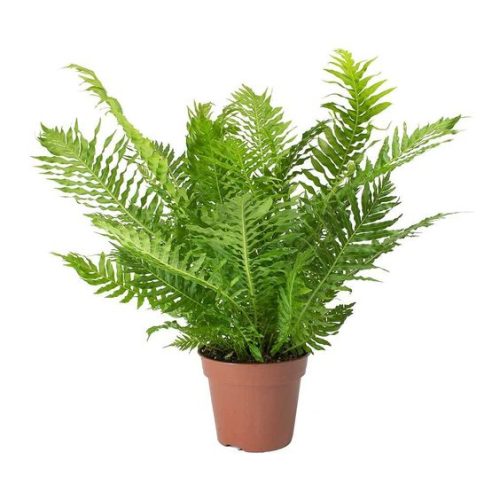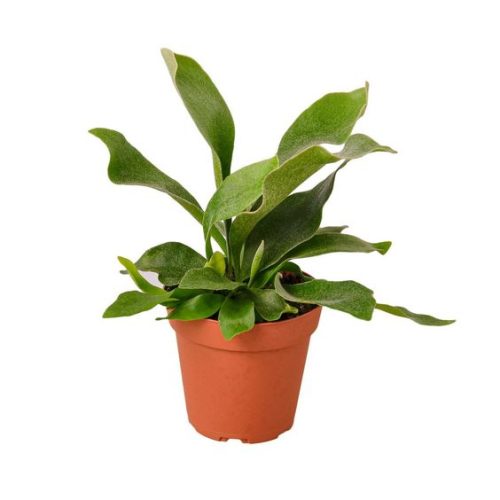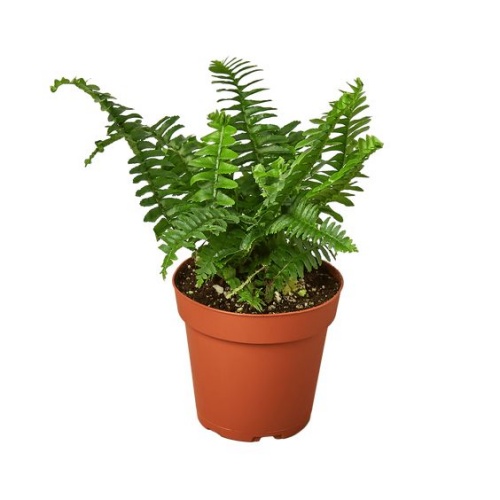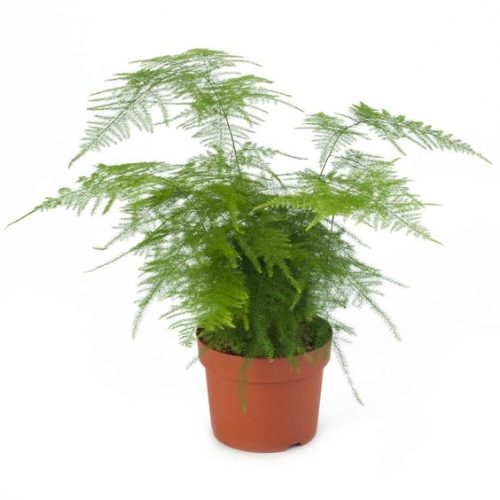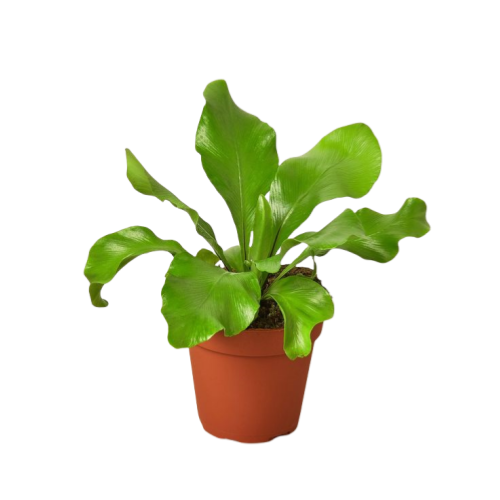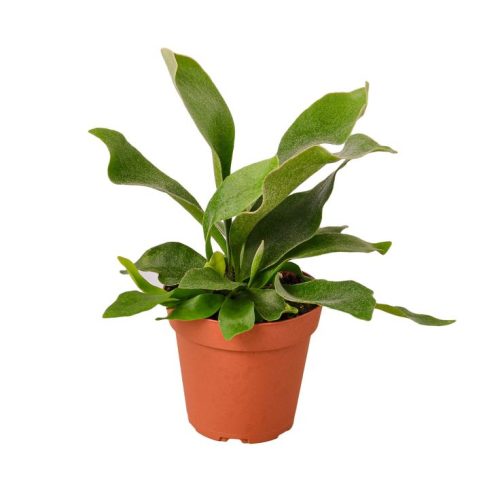Korean Rock Fern
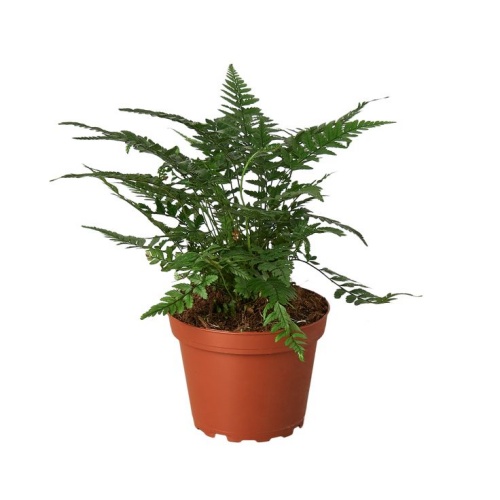
- Botanical Name: Polystichum tsus-conse
- Family Name: Dryopteridaceae
- Kakau: 4-15 inches
- Te pāmahana: 15℃-24℃
- Others: Cool,moist, semi-shaded, well-drained, organic soil, high humidity
Tirohanga whānui
Whakaahuatanga Hua
Korean Rock Fern: Ko te Raru o te Whakapakari
Nga manakohanga me te whakakotahitanga i roto i te taiao tipu
Korean Rock Fern (scientific name: Polystichum tsus-simense) is a resilient perennial fern that thrives in mild and humid climates. This fern prefers semi-shaded to fully shaded conditions and can grow in the crevices of rocks, demonstrating its adaptability to various environments. It requires well-draining soil that is rich in organic matter and enjoys a high-humidity environment. Indoors, it can grow under indirect light from north or east-facing windows, needing soil that is consistently moist but not waterlogged to prevent root rot. During the summer, daily watering may be necessary to keep the soil moist, and care should be taken to avoid wetting the fern’s fronds to reduce the risk of disease.

Korean Rock Fern
Te mana whakahaere o te pāmahana me te makuku
Korean Rock Fern has specific temperature requirements, thriving in a range of 60 to 75 degrees Fahrenheit (about 15 to 24 degrees Celsius), and can tolerate temperatures as low as 50 degrees Fahrenheit (about 10 degrees Celsius), but extreme heat or cold can affect the plant’s growth. This plant prefers bright, indirect light but can also grow in dimmer conditions, albeit at a slower rate. A high-humidity environment is needed, which can be maintained by using a humidifier or placing a tray of water near the plant to keep the ideal humidity levels. Indoors, Korean Rock Fern will do better in more humid areas, such as kitchens and bathrooms.
Te oneone me te matea tongi
Ko te hiahia o te kiri o te Rock o Korea, te oneone-houku me te pH whai kiko, me te panoni pai o te tihi o te tihi, te oneone kohuatia, me te Perlite i te 3: 2: 1. Hei kona ano, ko te kohua umanga a te umanga me nga waahanga rite me nga tatauranga ka taea te whakamahi. Ko te kohua kia pai nga kohua wai pai i te raro hei aukati i te kohi wai. Kaore e hiahiatia ana e tenei Fern te whakatipu pinepine, engari ka whai hua pea i te hinu wai whakaheke kotahi ranei te rua i te marama i te wa e tipu ana (te raumati me te ngahuru o te ngahuru). Ki te whakato, he mea nui kia whai i nga tohutohu mo te waimeha hei karo i nga maniua tiketike-hauota, ka taea te tahu i nga pakiaka.
Nga waahanga morphological me te ataahua taiao
Korean Rock Fern (scientific name: Polystichum tsus-simense) is favored by gardening enthusiasts for its unique morphological characteristics. The fern’s fronds display an elegant blue-green hue with a ferny frond structure, and the leaflets have serrated edges, adding a touch of natural wildness. The texture of the leaves is typically robust, adapting to variable environmental conditions. Its petioles are usually dark brown or black, with a glossy appearance that contrasts sharply with the color of the leaves, making the entire plant more eye-catching. The growth form of Korean Rock Fern is compact, with fronds radiating outward from the center, forming a natural, star-shaped crown structure. This structure is not only aesthetically pleasing but also helps the plant to grow steadily in the crevices of rocks.
Te huringa o te waa me te tipu tipu
In spring and early summer, the new fronds of Korean Rock Fern gradually unfurl, with colors that are usually more vibrant than those of mature fronds, sometimes with bronze or purple hues. Over time, these colors gradually shift to a mature blue-green. This change in color adds a dynamic visual effect to the plant’s growth process. Mature plants typically reach a height of 30 to 45 centimeters, with a crown spread that can reach 60 centimeters or wider, making Korean Rock Fern a medium-sized fern suitable as a ground cover or displayed in pots. Its moderate growth rate provides long-term ornamental value to garden landscapes.
Verstile Korean Rock Fern
Ko te tipu o te toka Korean he tipu tipu e tupu ana hei whakapaipai i roto i te whare o roto, me te mea he waahanga o waho. Kei te tino pai tenei otaota mo nga maara toka o te toka, te whakamahi i nga otaota kino, ki te mahi otaota kore mo te rōhi me nga rakau iti. Ka taea hoki te tipu o nga ipu, te whakarite i tetahi mea huatau mo nga kohua iti, o Bonsai ranei, te taapiri i te ahua o te ataahua taiao ki nga waahi o roto. Ahakoa he pai ake, ko te kowhatu Rock o te Korea ko te kai-kore-paitini ki nga ngeru me nga kuri, he pai te whiriwhiri mo nga whare kai-poaka.





